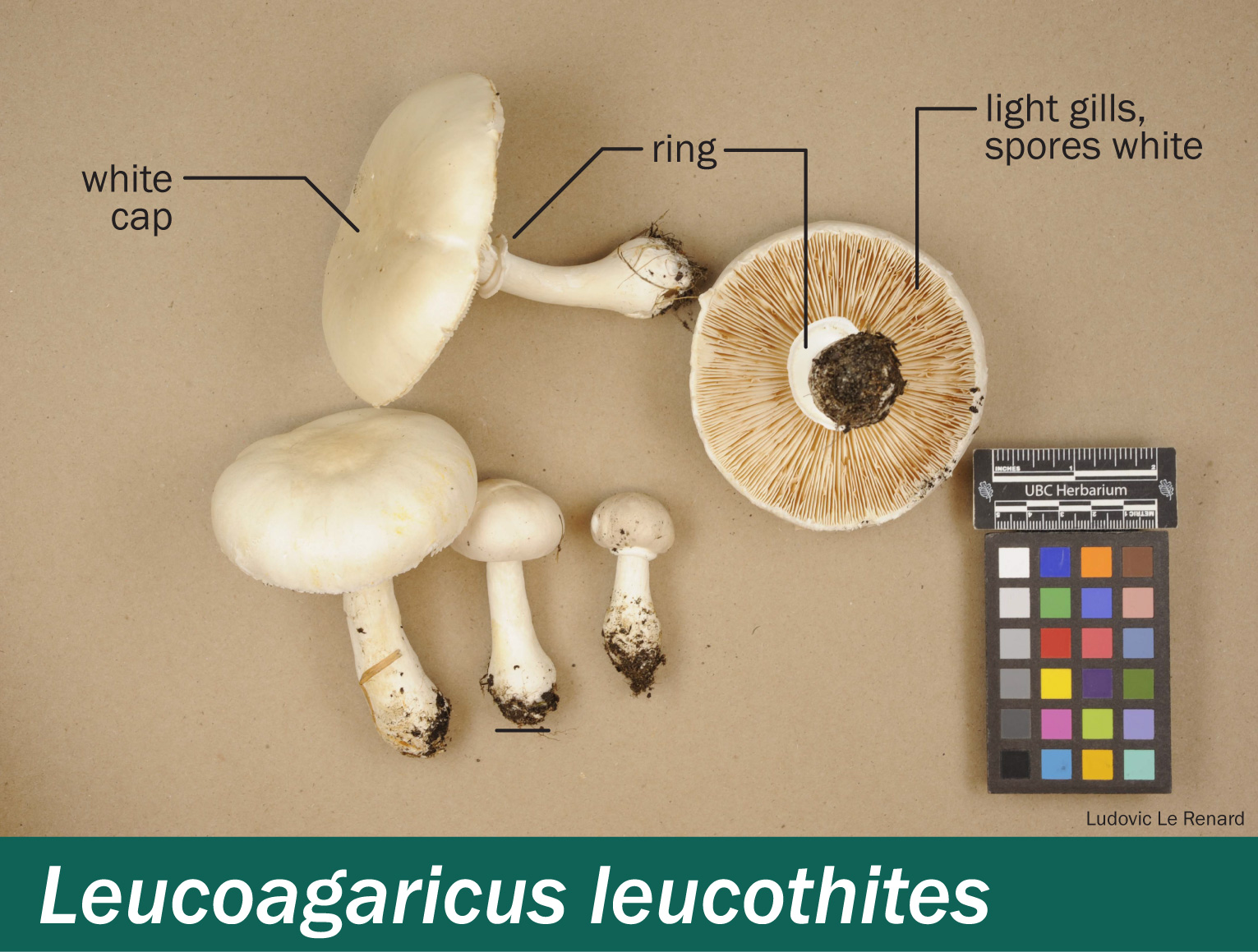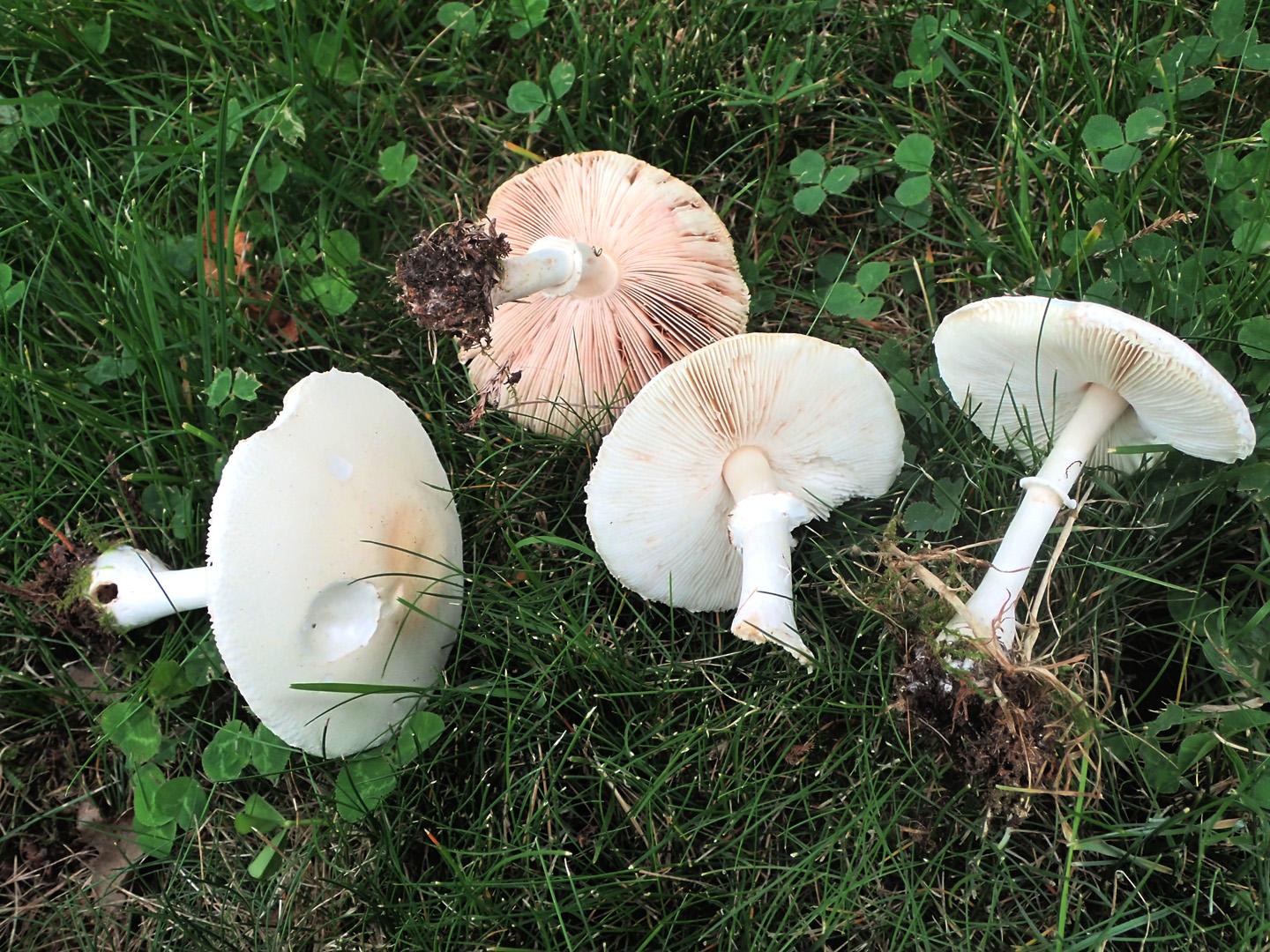Leucoagaricus leucothites — White dapperling, smooth parasol
Odour: Variable, from indistinct to distinctly fungal, or like aniseed or astringent.
Taste: Indistinct.
Cap: 3.5–10 (15) cm. It starts out rounded, often shaped like a motorcycle helmet, then flattens and spreads to become convex with a flattened or depressed centre. The surface appears dry and dull, not shiny, and its colour is commonly white to cream. The flesh in the cap is white, dull, and thick. This variable species can be robust or quite small. Old specimens can be brownish and grey-capped specimens are not uncommon. Some mushrooms become distinctly yellow when scratched while others develop pinkish colours.
Gills: Crowded, free from the stem, white at first, and gill edges remain white as gill faces turn cream or pink with age (see image above).
Stem: : 4–10 cm long, 0.5–1.5 cm wide, wider at the base than at the top. The base can be rounded. The colour is white all over when young, later brownish, especially below the ring. The stem breaks off easily, its rounded top separating from a round socket-like depression in the cap. The stem is hollow and its flesh is shiny and white.
Ring or veil: A distinct white ring with a cuff-like part around the stem and a small spreading rim.
Cup: None.
Spores: 7–10.0 x 5.0–7.0 µm, smooth, white in mass, colourless in transmitted light, but red-brown in an iodine solution, with a small germ pore.
Habitat: On the ground, in lawns, grasslands, but also in woods, and in human environments. Saprotrophic.
Geographical range: Widespread, common in temperate parts of the Northern Hemisphere including the Pacific northwest and in BC, and reported from the Southern Hemisphere.
Remarks: This species has also been known as Leucoagaricus naucinus and Lepiota naucina.
Symptoms: Gastrointestinal distress has been the most common complaint after eating this species. Time to onset has varied between 10 min and 10 hours, averaging 4 hours6.
Treatment: Contact your regional Poison Control Centre if you realize you or someone you know has become ill after eating this species. Poison centres provide free, expert medical advice 24 hours a day, seven days a week. If possible, save the mushrooms or some of the leftover food containing the mushrooms to help confirm identification.
Poison Control:
British Columbia: 604-682-5050 or 1-800-567-8911.
United States (WA, OR, ID): 1-800-222-1222.


